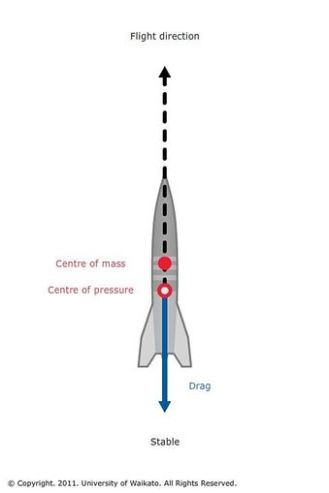When a rocket is in flight, even a small gust of wind can cause the flight path to alter. Even a small alteration can cause the launch to be a failure, which is why when building rockets people ensure their fins are the proper size and shape. The job of the fins is to keep the rocket stable in flight so that it does not wobble and then crash. The rocket rotates about its center of gravity while in flight and the goal is to keep that center of gravity perfectly vertical so that it does not tilt left (coasting) or right (powered). The main characteristic of fins that effects the flight of a rocket is how far out they stick out from the base of the rocket, because that changes how much area is encountering air molecules and thus changes the aerodynamics of the rocket.
The idea is that the fins create more drag on the rocket, keeping the rocket stable since lift and drag are known as the restoring forces, as they have the ability to force the rocket back to the original flight path if it wobbles and alters its trajectory. For our rocket, we decided to go with a heavier material for the fins (metal) and have them stick out an average amount since we are launching a fairly large rocket with a powerful engine (D12-5), so it would have a large amount of thrust that we wanted to make sure would not destabilize the rocket while in the air.
http://exploration.grc.nasa.gov/education/rocket/rktstab.html



 = the final exhaust velocity
= the final exhaust velocity = the initial mass
= the initial mass = the final mass
= the final mass



